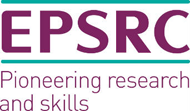Christopher Lambert
Christopher Lambert
Chris joined the CDT in September 2016, having previously completed an MSci in Chemistry at Queen's University Belfast. In Semester 1 2016/17 he completed an Exploratory Practical Research Project at the University of Glasgow, supervised by Professor Marc Sorel - Hybrid integration of semiconductor lasers on silicon photonic chips. In Semester 2, under the supervison of Dr Solveig Felton, at Queen's University Belfast, he completed a short research project - SQUID magnetometry of magnetic nanoparticles.
CDT PhD Research Project - High thermal stability plasmonic materials – beyond noble metals – for HAMR antennae
Supervisors: Professor Robert Bowman, Queen's University Belfast and Dr Donald MacLaren, University of Glasgow
The technical challenges of heat assisted magnetic recording can be roughly identified with three activities: a light source, the waveguide coupling from it to the radiating antennae and the radiating antennae itself. To be able to raise the localised temperature of the hard disk drive’s magnetic media up to 600oC for the HAMR process the antennae has to sustain a very large density of electromagnetic energy delivered to it from the light source via the waveguide. It also has to repeatedly sustain the energy density through repeated cycling from off/on states over many years for it to be a manufacturable product. Detailed modelling and simulation allied to preliminary implementations of the antennae have shown that the resonant energy within the antennae raises the antennae temperature to in excess of 3000C.
In order to demonstrate the realisability of HAMR the most effective plasmonic materials have been used. These materials are either noble metals or simple noble alloys. However, in all implementations it has been seen that these materials are unable to sustain the required energy densities. Failures arise due to optical losses leading to high temperature causing deformations, recrystallisations, diffusion and loss of atoms from the structure. All these lead to significant geometry changes and the antennae performance is intrinsically linked to the designed geometry.
In this project, current state of the art data obtained by Seagate Technology will be reviewed to identify a current performance baseline. This ambitious project will then go beyond work on basic noble metals to explore alternates. Importantly from Seagate Technology's perspective the student will lead a fundamental but industrially inspired materials identification and systhesis programme to explore sets of materials beyond what they currently do on their process equipment but is informed by limitations/feasible of ultimate deployment on scaled deposition equipment.
Binary & ternary intermetallics (additional subsitutions to Au alloys or more adventurous approaches such as Heuslers e.g. Cu2MnAl ) Nitrides (TiN) and Nonstoichiometric oxides (V, Ti, Al) that have Au or other noble metals added to increase carrier densities are envisaged to start. For the chosen materials we will explore compositional modifications, evaluate optical properties of existing and new materials based on a methodology that combines optical response with thermal histories where the materials will be subject to thermal cycling and to optical/laser irradiation of various fluxes to explore changes in microstructure and plasmonic responsivity. Plasmonic response will be evaluated by far field (rapid sample screening) and near field with our SNOM (more site specific characterization for corroboration with microstructure etc) and in tandem with an existing CDT PhD project that uses the HRTEM to map plasmon response.
The project will be readily extended to the challenge of integration and depending on a combination of student interest and motivation and technical input from Seagate Technology the opportunity to examine the integration of plasmonic antennae materials with waveguides or materials in the vicinity of the writer element could be explored as a culmination to the programme. The majority of the work will be based in Belfast on fabrication and evaluation of materials. Structural, chemical and some optical characterisation will be undertaken in QUB and Glasgow. The student will gain a wide range of experience from synthesis on state of art deposition tools, through experimental characterisations allied to computer based modelling simulation and design. They will interact with other Seagate Technology directed projects. They will also be supported by a PDRA with experience in plasmonic materials.





